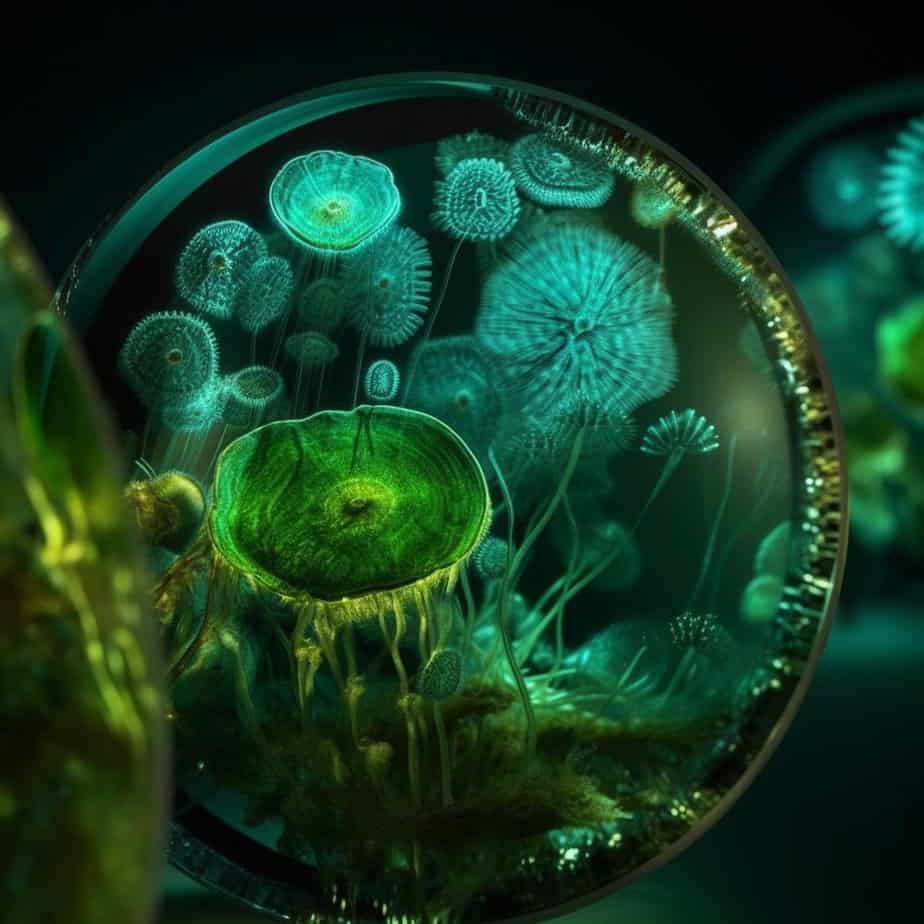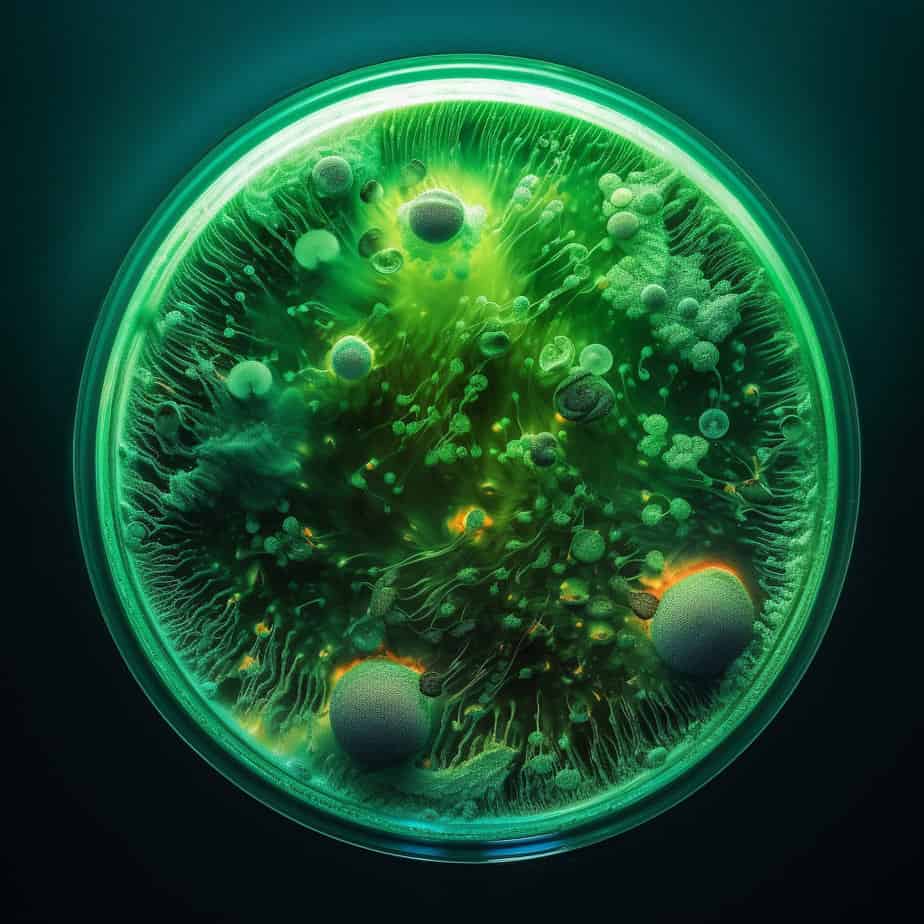Phytoplankton, the microscopic plants that inhabit the world‘s oceans, play a crucial role in the production of oxygen on our planet. These tiny organisms, which are responsible for about half of the global oxygen supply, undergo photosynthesis to convert carbon dioxide and sunlight into energy. As a result, they release oxygen as a byproduct into the surrounding water and atmosphere. This process not only sustains marine life but also has a significant impact on the Earth’s overall oxygen levels. In this article, we will explore the fascinating world of phytoplankton and delve into the details of how they produce oxygen. So, let’s dive in and uncover the secrets of these remarkable organisms.
Key Takeaways
- Phytoplankton are microscopic plants that produce oxygen through photosynthesis.
- They play a crucial role in the production of oxygen on Earth, contributing to approximately 50% of the oxygen in the atmosphere.
- Phytoplankton are the foundation of marine food chains and support diverse ecosystems.
- Factors such as nutrient availability, temperature, and light influence the growth and productivity of phytoplankton.
- Understanding and preserving phytoplankton populations is essential for maintaining oxygen levels and the health of marine ecosystems.
Understanding Phytoplankton: The Invisible Oxygen Factories

A. What is Phytoplankton?
Phytoplankton are microscopic plants that play a vital role in the health of our oceans. These chlorophyll-containing organisms are the primary producers in aquatic ecosystems, responsible for a significant portion of the oxygen we breathe. Despite their small size, phytoplankton have a massive impact on the planet‘s oxygen cycle and the overall health of marine ecosystems.
Phytoplankton are found in both freshwater and saltwater environments, but they are most abundant in the world‘s oceans. They are so tiny that they cannot be seen with the naked eye, but their collective presence can be observed as a greenish hue in the water, especially during a phenomenon known as a “phytoplankton bloom.”
B. The Role of Phytoplankton in the Ecosystem
Phytoplankton are often referred to as the “invisible oxygen factories” of the ocean. Through the process of photosynthesis, these microscopic plants convert carbon dioxide and sunlight into organic matter and oxygen. This photosynthesis process not only produces oxygen but also helps in the absorption of carbon dioxide, a greenhouse gas responsible for climate change.
The oxygen produced by phytoplankton is crucial for maintaining the marine oxygen supply. It is estimated that about 50-85% of the oxygen in Earth’s atmosphere comes from marine photosynthesis, with phytoplankton contributing a significant portion to this production. This oxygen is essential for the survival of marine organisms and plays a vital role in the global oxygen cycle.
Phytoplankton also serve as the foundation of the marine food chain. They are consumed by a variety of organisms, including zooplankton, small fish, and even whales. These primary producers provide the energy and nutrients needed for the entire ecosystem to thrive. Without phytoplankton, the entire marine food web would collapse, leading to devastating consequences for marine life and ultimately impacting human populations that rely on the ocean for food and resources.
In addition to their role in oxygen production and the marine food chain, phytoplankton also contribute to carbon sequestration. They absorb carbon dioxide from the atmosphere and store it in their cells. When they die, they sink to the ocean floor, taking the carbon with them. This process, known as “blue carbon,” helps to mitigate climate change by removing carbon dioxide from the atmosphere and storing it in the deep ocean.
Overall, phytoplankton are essential for maintaining the health and balance of our oceans. Their ability to produce oxygen, support the marine food chain, and sequester carbon makes them crucial players in both the global climate system and the overall well-being of our planet. It is important to understand and protect these invisible oxygen factories to ensure the long-term health of our oceans and the sustainability of life on Earth.
The Oxygen Production Process of Phytoplankton

A. Photosynthesis: The Key to Oxygen Production
Photosynthesis is a vital process that occurs in various organisms, including plants, algae, and phytoplankton. It is the primary mechanism through which oxygen is produced on Earth. Phytoplankton, which are microscopic plants found in aquatic ecosystems, play a significant role in this process.
B. How Do Phytoplankton Create Oxygen?
Phytoplankton, as chlorophyll-containing organisms, utilize sunlight to convert carbon dioxide and water into glucose and oxygen through photosynthesis. This process involves several steps:
-
Sunlight Utilization: Phytoplankton harness the energy from sunlight using chlorophyll pigments present in their cells. These pigments absorb light, particularly in the blue and red regions of the electromagnetic spectrum.
-
Carbon Dioxide Absorption: Phytoplankton absorb carbon dioxide dissolved in the surrounding water. This carbon dioxide is an essential component for the production of glucose during photosynthesis.
-
Photosynthetic Reaction: Inside the phytoplankton cells, the absorbed sunlight energy is used to convert carbon dioxide and water into glucose and oxygen. This reaction takes place in specialized structures called chloroplasts.
-
Oxygen Release: As a byproduct of photosynthesis, oxygen is released into the surrounding water. This oxygen contributes to the overall oxygen levels in aquatic ecosystems and is crucial for the survival of marine organisms.
C. The Release of Oxygen by Phytoplankton
The release of oxygen by phytoplankton has a significant impact on the oxygen cycle and the health of our oceans. Phytoplankton are considered the primary producers in marine ecosystems, forming the base of the marine food chain. They provide sustenance for various organisms, including zooplankton, which are consumed by larger marine animals.
Additionally, phytoplankton blooms, which are rapid increases in phytoplankton populations, can have a profound effect on the oxygen supply in the ocean. These blooms occur when favorable conditions, such as nutrient availability and sunlight, promote rapid phytoplankton growth. As a result, the oxygen production by phytoplankton increases, leading to higher oxygen levels in the surrounding water.
The oxygen produced by phytoplankton is not only vital for marine organisms but also plays a crucial role in the global climate. Through a process known as carbon sequestration, phytoplankton absorb carbon dioxide from the atmosphere during photosynthesis. This helps regulate the Earth’s carbon cycle and mitigate the effects of climate change.
In summary, phytoplankton are essential contributors to oxygen production in aquatic ecosystems. Through photosynthesis, they utilize sunlight, absorb carbon dioxide, and release oxygen into the water. Their role as primary producers and their ability to sequester carbon make them crucial for maintaining the health of our oceans and the overall balance of our planet’s climate.
Quantifying Phytoplankton’s Contribution to Global Oxygen Levels

A. How Much Oxygen Does Phytoplankton Produce?
Phytoplankton, the microscopic plants found in aquatic ecosystems, play a crucial role in maintaining the health of our oceans and the overall balance of our planet. These chlorophyll-containing organisms are the primary producers in marine food chains and are responsible for a significant portion of the oxygen we breathe.
Through the process of photosynthesis, phytoplankton utilize sunlight, carbon dioxide, and nutrients to produce organic matter and release oxygen as a byproduct. This photosynthetic plankton is responsible for approximately 50% of the oxygen in the Earth’s atmosphere. It’s quite astonishing to think that these tiny organisms, invisible to the naked eye, have such a significant impact on our planet’s oxygen supply.
To put this into perspective, consider that every second breath you take is thanks to the oxygen produced by phytoplankton. They are the unsung heroes of the oxygen cycle, continuously replenishing the air we breathe.
B. What Percentage of the World’s Oxygen is Produced by Phytoplankton?
Phytoplankton’s contribution to the world‘s oxygen supply is truly remarkable. Although estimates vary, scientists believe that phytoplankton is responsible for approximately 50-85% of the oxygen we have in the atmosphere. This range is due to the dynamic nature of phytoplankton populations, which can fluctuate depending on various factors such as nutrient availability, temperature, and light conditions.
It’s important to note that while phytoplankton produces a significant amount of oxygen, other sources, such as terrestrial plants and algae, also contribute to the overall oxygen levels. However, phytoplankton remains a critical player in the global oxygen cycle, particularly in the oceanic environment.
The health and abundance of phytoplankton populations are vital for maintaining a stable oxygen supply and the overall well-being of our oceans. Unfortunately, factors such as climate change, pollution, and nutrient imbalances can negatively impact phytoplankton growth and productivity. This, in turn, can have far-reaching consequences for the oxygen levels in our atmosphere and the health of marine ecosystems.
In recent years, scientists have been studying the role of phytoplankton in carbon sequestration, also known as “blue carbon.” Phytoplankton’s ability to absorb carbon dioxide during photosynthesis helps mitigate the effects of climate change by reducing greenhouse gas concentrations in the atmosphere.
In conclusion, phytoplankton’s contribution to global oxygen levels is significant and should not be underestimated. These microscopic plants are the unsung heroes of our planet, continuously working to maintain the balance of our atmosphere and support life on Earth. It is crucial that we take steps to protect and preserve the health of our oceans to ensure the continued productivity of these vital organisms.
Phytoplankton vs Trees: A Comparative Analysis of Oxygen Production
A. Do Phytoplankton Produce More Oxygen than Trees?
When we think about oxygen production, the first image that comes to mind is often a lush forest filled with tall, green trees. It’s true that trees play a crucial role in producing oxygen through the process of photosynthesis. However, there is another group of organisms that are equally, if not more, important in oxygen production: phytoplankton.
Phytoplankton are microscopic plants that live in aquatic ecosystems, particularly in the ocean. These chlorophyll-containing organisms utilize sunlight to convert carbon dioxide into oxygen through the process of marine photosynthesis. In fact, phytoplankton are responsible for producing about 50% of the oxygen in our atmosphere, making them the primary producers of oxygen on our planet.
While trees are undoubtedly vital for maintaining oxygen levels on land, the sheer abundance and productivity of phytoplankton in the oceans make them a significant player in the oxygen cycle. The ocean covers about 71% of the Earth’s surface, providing an expansive habitat for these tiny oxygen factories. Their ability to absorb carbon dioxide and release oxygen contributes to the overall health of our planet.
B. The Significance of Phytoplankton in Oxygen Production Compared to Trees
Phytoplankton’s role in oxygen production goes beyond sheer quantity. Their contribution to the oxygen cycle has far-reaching implications for climate regulation and the health of marine ecosystems.
-
Carbon Sequestration: Phytoplankton not only produce oxygen but also play a crucial role in carbon sequestration. Through photosynthesis, they absorb carbon dioxide from the atmosphere, effectively mitigating the impacts of greenhouse gases. This process helps regulate global climate patterns and reduce the effects of climate change.
-
Marine Food Chain: Phytoplankton form the foundation of the marine food chain. They are consumed by zooplankton, which in turn are eaten by larger organisms such as fish, whales, and other marine animals. By producing oxygen, phytoplankton support the entire ecosystem, ensuring the survival of countless species and maintaining the delicate balance of marine life.
-
Blue Carbon: Phytoplankton contribute to the concept of “blue carbon,” which refers to the carbon stored in coastal and marine ecosystems. These ecosystems, including mangroves, seagrasses, and salt marshes, rely on the oxygen produced by phytoplankton. By protecting these habitats, we can preserve their ability to sequester carbon and maintain the health of our oceans.
In conclusion, while trees are undeniably important for oxygen production on land, phytoplankton are equally significant, if not more so, in the overall oxygen cycle. Their ability to produce oxygen, absorb carbon dioxide, and support marine ecosystems makes them a vital component of our planet’s health. Recognizing the role of phytoplankton in oxygen production highlights the interconnectedness of land and ocean ecosystems and the importance of preserving both for a sustainable future.
The Implications of Phytoplankton Oxygen Production
A. Why Do Phytoplankton Produce So Much Oxygen?
Phytoplankton, the microscopic plants that inhabit aquatic ecosystems, play a crucial role in the production of oxygen on our planet. These chlorophyll-containing organisms utilize sunlight and carbon dioxide through the process of photosynthesis to produce oxygen and organic compounds. But why do phytoplankton produce so much oxygen? Let’s explore the reasons behind their remarkable oxygen production.
-
Photosynthesis Process: Phytoplankton, just like plants on land, undergo photosynthesis to convert sunlight, carbon dioxide, and water into oxygen and glucose. This process enables them to harness the energy from the sun and convert it into chemical energy, which sustains their growth and survival.
-
Carbon Dioxide Absorption: Phytoplankton act as carbon sinks, absorbing significant amounts of carbon dioxide from the atmosphere. Through photosynthesis, they convert this greenhouse gas into oxygen, effectively reducing its concentration in the air. This carbon sequestration process helps mitigate climate change by reducing the greenhouse effect.
-
Oceanic Oxygen Production: Phytoplankton are responsible for approximately half of the oxygen production on Earth. They release vast amounts of oxygen into the atmosphere as a byproduct of photosynthesis. This oxygen production is crucial for the survival of marine organisms and contributes to the overall oxygen balance of our planet.
-
Marine Food Chain: Phytoplankton serve as primary producers in the marine food chain. They form the base of the food web, providing nourishment for zooplankton, small fish, and other marine organisms. Without phytoplankton, the entire marine ecosystem would collapse, leading to a decline in oxygen production and disrupting the delicate balance of oceanic life.
B. The Impact of Phytoplankton on Global Climate and Oxygen Levels
The role of phytoplankton in climate regulation and oxygen production extends beyond their immediate surroundings. Their presence and activities have far-reaching implications for the health of our planet and its inhabitants. Let’s delve into the impact of phytoplankton on global climate and oxygen levels.
-
Climate Regulation: Phytoplankton play a crucial role in regulating Earth’s climate. Through the process of marine photosynthesis, they absorb carbon dioxide, a greenhouse gas responsible for global warming. By converting carbon dioxide into oxygen and organic matter, phytoplankton help maintain a balance in atmospheric carbon dioxide levels, thus mitigating the effects of climate change.
-
Ocean Health: The well-being of phytoplankton is closely linked to the health of our oceans. Factors such as temperature, nutrient availability, and sunlight influence their growth and distribution. Changes in these environmental conditions, such as rising sea temperatures or nutrient imbalances, can impact phytoplankton populations, leading to disruptions in the marine ecosystem and affecting oxygen production.
-
Blue Carbon: Phytoplankton contribute to the storage of carbon in the ocean, a concept known as “blue carbon.” When phytoplankton die, they sink to the ocean floor, taking carbon with them. This carbon sequestration process helps reduce the amount of carbon dioxide in the atmosphere, playing a crucial role in mitigating climate change.
-
Oxygen Cycle: Phytoplankton are key players in the global oxygen cycle. Through photosynthesis, they release oxygen into the atmosphere, replenishing the oxygen supply and supporting the respiration of marine organisms. The oxygen produced by phytoplankton is essential for the survival of marine life and contributes to the overall oxygen balance of our planet.
In conclusion, the remarkable oxygen production by phytoplankton is vital for sustaining life on Earth. Their ability to convert sunlight and carbon dioxide into oxygen through photosynthesis not only supports the marine food chain but also helps regulate global climate and maintain oxygen levels in our atmosphere. Understanding and preserving the health of phytoplankton populations is crucial for the well-being of our oceans and the planet as a whole. Conclusion
In conclusion, phytoplankton play a crucial role in the production of oxygen on our planet. These microscopic organisms, found in bodies of water all over the world, utilize photosynthesis to convert carbon dioxide and sunlight into energy. As a byproduct of this process, they release oxygen into the atmosphere. Phytoplankton are responsible for producing approximately half of the oxygen we breathe, making them vital to the health and well-being of all life on Earth. Their abundance and productivity are influenced by various factors such as nutrient availability, temperature, and sunlight. However, it is important to note that the delicate balance of phytoplankton populations can be disrupted by human activities, such as pollution and climate change, which can have far-reaching consequences for the oxygen levels in our atmosphere. Therefore, it is crucial that we take steps to protect and preserve these microscopic organisms and the ecosystems they inhabit, as they are not only essential for oxygen production but also for maintaining the overall health of our planet.
Frequently Asked Questions
How does phytoplankton make oxygen?
Phytoplankton, like other photosynthetic organisms, utilize sunlight, water, and carbon dioxide to produce glucose and oxygen through the process of photosynthesis. They absorb carbon dioxide from the water around them and, using the energy from sunlight, convert it into organic compounds, releasing oxygen as a byproduct.
Do phytoplankton release oxygen?
Yes, phytoplankton release oxygen as a byproduct of photosynthesis. This process is vital for maintaining the oxygen levels in our atmosphere and oceans, contributing significantly to the overall oxygen cycle.
Why do phytoplankton produce so much oxygen?
Phytoplankton are primary producers in the marine food chain and they are abundant in the world‘s oceans. They use sunlight to photosynthesize, a process that produces oxygen as a byproduct. Given their vast numbers and the constant process of photosynthesis, they produce a significant amount of oxygen.
How much of the world’s oxygen is produced by phytoplankton?
It’s estimated that phytoplankton contribute between 50% to 85% of the world‘s oxygen, highlighting their critical role in maintaining the Earth’s oxygen balance. This also underscores their importance in the global carbon cycle, as they absorb large amounts of carbon dioxide during photosynthesis.
What produces more oxygen, phytoplankton or trees?
While both phytoplankton and trees are vital oxygen producers, phytoplankton are believed to contribute more to global oxygen production. This is due to the vastness of the oceans and the efficiency with which phytoplankton can convert sunlight and carbon dioxide into oxygen and glucose.
How do phytoplankton create oxygen?
Phytoplankton create oxygen through the process of photosynthesis. They absorb sunlight and use it to convert carbon dioxide and water into glucose and oxygen. The oxygen is then released into the water and eventually makes its way into the atmosphere.
What percentage of oxygen do phytoplankton produce?
Phytoplankton are estimated to produce between 50% to 85% of the world‘s oxygen. This range is due to variations in phytoplankton populations and photosynthetic activity, which can be influenced by factors such as sunlight availability, nutrient levels, and water temperature.
How much oxygen does phytoplankton produce?
The exact amount of oxygen produced by phytoplankton is difficult to quantify due to the vastness of the oceans and the variability in phytoplankton populations. However, it’s estimated that they contribute between 50% to 85% of the world‘s oxygen.
Does phytoplankton produce more oxygen than trees?
Yes, phytoplankton are believed to produce more oxygen than trees. This is due to their abundance in the world‘s oceans and their ability to photosynthesize even under low light conditions, making them highly efficient oxygen producers.
How do phytoplankton contribute to the health of the oceans?
Phytoplankton play a crucial role in maintaining the health of the oceans. They produce a significant amount of the world‘s oxygen, absorb carbon dioxide, and serve as the primary food source for many marine organisms. Additionally, phytoplankton blooms can help sequester carbon, a process known as blue carbon, which can help mitigate climate change.




